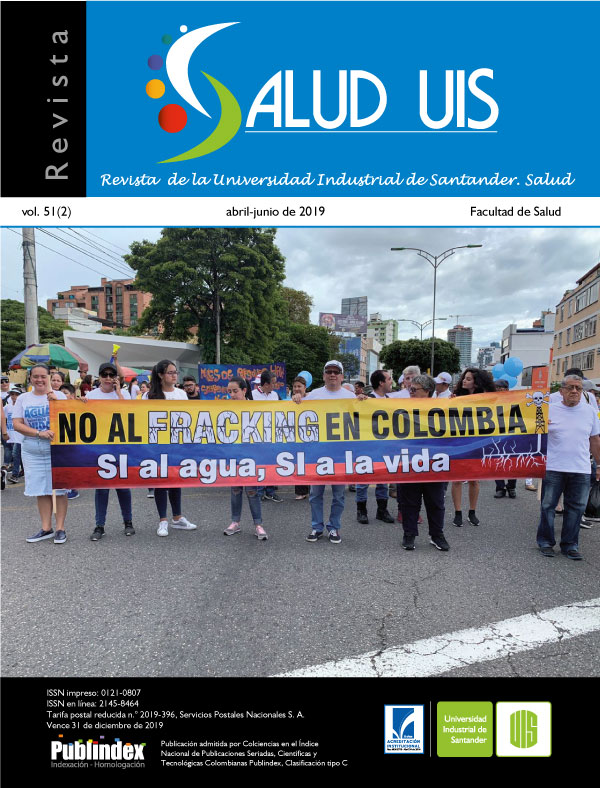Abstract
Introduction: The use of information and communication technologies, facilitate educational processes, allowing interaction from different places and at different times, facilitating self-learning and collaborative learning. It has been incorporated into a health area and adopted by oncological centers in different countries. Objective: To design and evaluate an interactive Virtual Learning Environment (VLE) in order to update, train and support of nursing staff, in the performance of the Pap test, in support of the National Plan for Cervical Cancer Prevention. Material and Method: A virtual learning environment was created, supported by the Moodle Learning Management System, following the methodological model of instructional design ADDIE. In addition, a usability test was carried out, using a Likert-type survey to assess ease of learning, satisfaction and attractiveness. Results: The content of the course was included in three main phases: (a) Course Introduction: to introduce the students to the course, the teaching profile is presented, the norms of the same and the form of evaluation are established. (b) Development of Learning Units: Made from learning objects. (c) Evaluation, discussion and sharing of points of view and solving problems. Conclusions: The virtual learning environment is adjusted to the specific needs of training in the technique of conventional pap smear test and meets the characteristics described in the literature: granulity, pedagogical flexibility, formalization, self-sustainability and usability.
References
2. Silva J. Diseño y moderación de entornos virtuales de aprendizaje (EVA). Barcelona: Editorial UOC; 2011. 166 p.
3. Palacios Silva R. Entorno virtual de aprendizaje. Rev Univ Divulg Ciencias y Artes. 2018; 2: 35-42.
4. UNESCO. Las TIC en la educación. 2018.
5. Webb L, Witham G, Clough J, Wilmott D, O’Reilly D. The utility and impact of Information Communication Technology (ICT) for preregistration nurse education: A narrative synthesis systematic review. Nurse Educ Today. 2017; 48: 160-171. doi: 10.1016/j.nedt.2016.10.007.
6. Cendales R, Wiesner C, Murillo RH, Piñeros M, Tovar S, Mejía JC. La calidad de las citologías para tamización de cáncer de cuello uterino en cuatro departamentos de Colombia : un estudio de concordancia. Biomédica. 2010; 30(1): 107-115. doi: https://doi.org/10.7705/biomedica.v30i1.158.
7. Organización Panamericana de la Salud. Análisis de la situación del cáncer cervicouterino en América Latina y el Caribe. Washington DC. 2004; 24 p.
8. Muñoz N, Bravo LE. Epidemiology of cervical cancer in Colombia. Colomb Med. 2012; 43(4): 298-304.
9. Peralta-zaragoza O, Deas J, Gómez-Cerón C, García-Suastegui WA, Fierros-Zárate GS, Jacobo-Herrera NJ. HPV-Based Screening, triage, treatment, and followup strategies in the management of cervical intraepithelial neoplasia. Obstet Gynecol Int. 2013; 2013: 912780. doi: http://dx.doi.org/10.1155/2013/912780.
10. Institut Català d’Oncologia. e-oncologia. 2004.
11. BMJ Publishing Group. BMJ-Learning. 2018.
12. Instituto Nacional de Cancerología- ESE- Ministerio de Salud y Protección Social - Colombia. Cursos virtuales. 2018.
13. Instituto Nacional de Salud. Aula Virtual.
14. Costello E. Opening up to open source: looking at how Moodle was adopted in higher education. Open Learning. 2013; 28(3): 187-200. doi: https://doi.org/10.1080/02680513.2013.856289.
15. Godwin-Jones R. Learning Objects: Scorn or SCORM ? Lang Learn Technol. 2004; 8(2): 7-12.
16. Universitat de Valencia. Entornos Virtuales de Formación: Modelo ADDIE. 2013.
17. Navarro E, Texeira A. Constructivismo en la educación virtual. Rev DIM Didáctica, Innovación y Multimed. 2011; (21): 8.
18. Adobe. Adobe Flash. 2018
19. Articulate Global. Articulate. 2018.
20. Adobe. Adobe Ilustrator CC . 2018.
21. Vega-Prieto R, Rodriguez LZ, Yaneisi O, Morell J. Procedimiento para realizar pruebas de usabilidad. Rev Informática Jur. 2013; 10(2): 1-15.
22. MOODLE. General developer forum. Moodle. 2014.
23. Nogueira S, Mara L, Fonseca M, Cândida M, Furtado DC, Leite AM, et al. Evaluación del objeto virtual de aprendizaje. Raciocinio diagnóstico en enfermería aplicado al prematuro. Rev Latino-Am Enferm. 2011; 19(4).
24. Kenny A. Online learning: enhancing nurse education? J Adv Nurs. 2002; 38(2): 127-135.
25. Chaffin AJ, Maddux CD. Internet teaching methods for use in baccalaureate nursing education. CIN Comput Informatics. 2004; 22(3): 132-142.
26. Ward R, Moule P. Supporting pre-registration students in practice: A review of current ICT use. Nurse Educ Today. 2007; 27(1): 60-67.
27. Button D, Harrington A, Belan I. E-learning & information communication technology ( ICT ) in nursing education : a review of the literature. Nurse Educ Today. 2013; 34(10): 1311-1323. doi: https://doi.org/10.1016/j.nedt.2013.05.002.
28. Williams J, O’Connor M, Windle R, Wharrad HJ. Using reusable learning objects (rlos) in injection skills teaching: Evaluations from multiple user types. Nurse Educ Today. 2015; 35(12): 1275-1282. doi: 10.1016/j.nedt.2015.06.001.

This work is licensed under a Creative Commons Attribution 4.0 International License.

